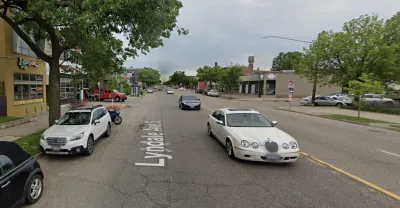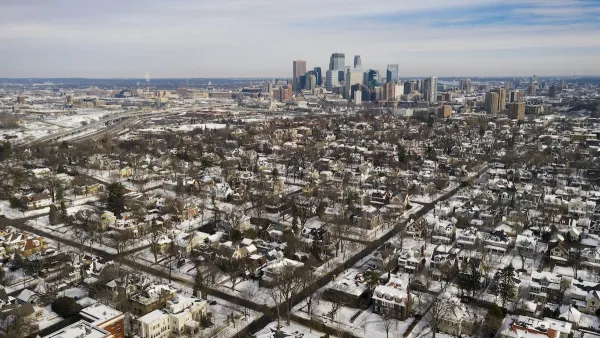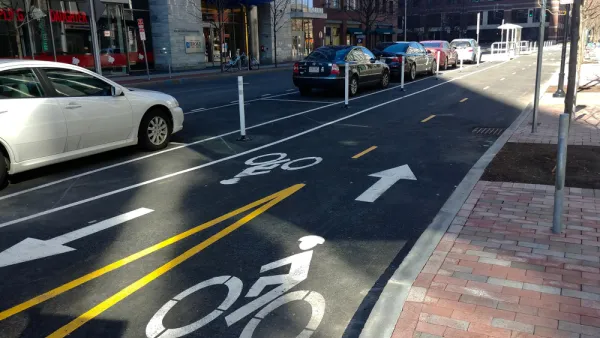In the Twin Cities, traffic engineers are reconsidering traffic congestion on four-lane arterials in the face of unrelenting tragedy on these car-centric corridors. Road diets, designed for safety, are now a more tenable proposition.

Bill Lendeke reports from the Twin Cities region in Minnesota, where traffic fatalities are pressuring local officials to commit to changes on unsafe four-lane arterials where drivers inflict the most damage.
Lyndale Avenue in provides the scene for the story, as the location of a recent tragedy where a driver struck and killed 54-year-old Theodore Ferrera on October 13.
At first glance, the idea of change on Lyndale might seem hopeless. The Hennepin County arterial street has very high traffic volumes — more than 24,000 cars a day. But recent moves by Ramsey and Hennepin Counties this year are signs that the conventional wisdom about four-lane roads might be changing. Both counties have become more aggressive about implementing three-lane “road diets,” as engineers and policy makers have begun to push the boundaries of where safety measures might work. These new designs, on streets like Broadway NE and Maryland Avenue, might be a sign of a safer approach to urban streets in the Twin Cities.
According to Lindeke, four-lane, undivided roads in walkable urban neighborhoods are the most deadly streets in the region. The street design is intended to give cars room to speed and maneuver around slower or stopped vehicles. Adding pedestrians to the mix has deadly consequences. It took a certain traffic volume, below 16,000 car trips a day, to convince traffic engineers to commit to a road diet on streets like this in the region, due to the desire to keep moving cars traffic moving at high speeds. The old traffic regime, however, is coming to end.
"This year, at least in the Twin Cities, the industry standards are beginning to change. In the wake of persistent crashes, first Ramsey and now Hennepin County are implementing four-to-three-lane conversions on arterials with far more traffic than in years past," explains Lindeke.
FULL STORY: Risky Hennepin and Ramsey County streets are increasingly being put on ‘road diets’

Analysis: Cybertruck Fatality Rate Far Exceeds That of Ford Pinto
The Tesla Cybertruck was recalled seven times last year.

National Parks Layoffs Will Cause Communities to Lose Billions
Thousands of essential park workers were laid off this week, just before the busy spring break season.

Retro-silient?: America’s First “Eco-burb,” The Woodlands Turns 50
A master-planned community north of Houston offers lessons on green infrastructure and resilient design, but falls short of its founder’s lofty affordability and walkability goals.

Test News Post 1
This is a summary

Analysis: Cybertruck Fatality Rate Far Exceeds That of Ford Pinto
The Tesla Cybertruck was recalled seven times last year.

Test News Headline 46
Test for the image on the front page.
Urban Design for Planners 1: Software Tools
This six-course series explores essential urban design concepts using open source software and equips planners with the tools they need to participate fully in the urban design process.
Planning for Universal Design
Learn the tools for implementing Universal Design in planning regulations.
EMC Planning Group, Inc.
Planetizen
Planetizen
Mpact (formerly Rail~Volution)
Great Falls Development Authority, Inc.
HUDs Office of Policy Development and Research
NYU Wagner Graduate School of Public Service




























